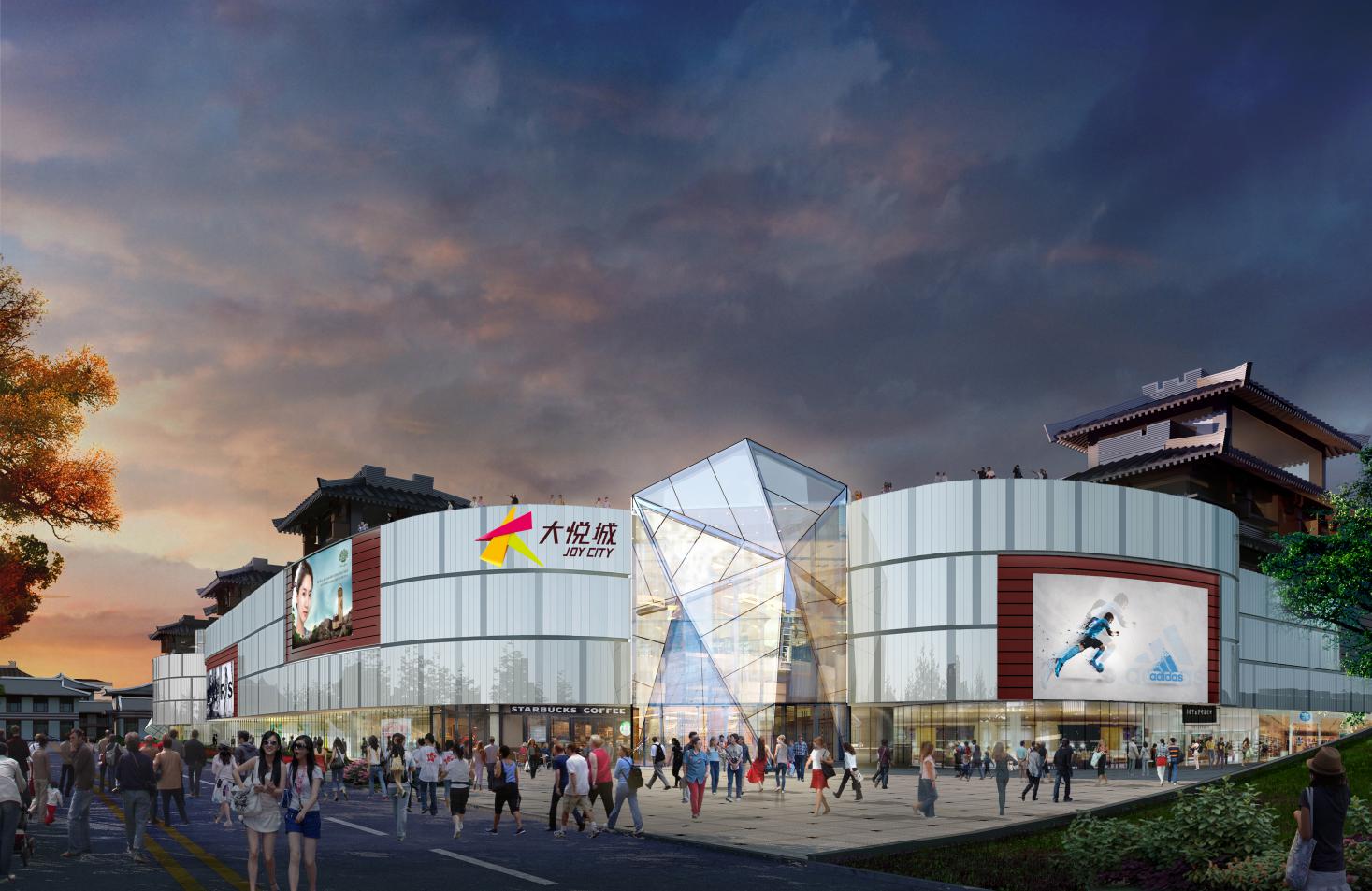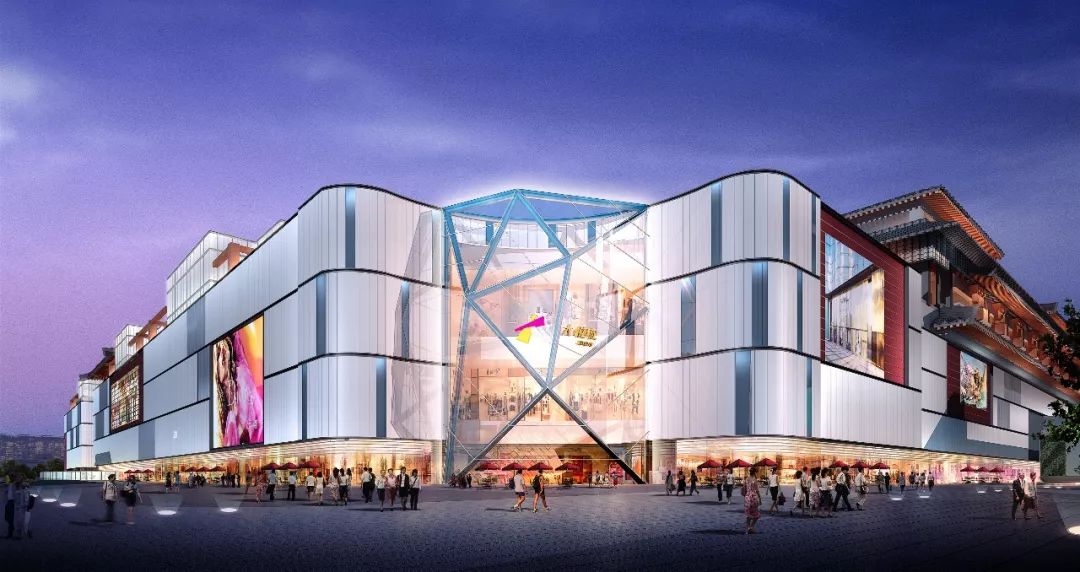As a historical carrier of China’s ancient capital of thirteen dynasties, Xi’an Ancient City is defined by its architectural style—heavy city walls, overhanging eaves with bucket arches, and 砖石肌理 (stone and brick textures). U profile glass, a modern building material blending industrial aesthetics with energy efficiency, has shown unique adaptability in Xi’an’s urban renewal. This analysis explores their interplay through three dimensions: material dialogue in historical context, case studies, and future application potential.
I. Material Dialogue in Historical Context
1. Deconstruction and Reconstruction of Traditional Architectural Language
The transparency of U profile glass contrasts sharply with the solidity of the ancient city’s stone walls, yet their interaction with light preserves historical narratives. For example, Xi’an Joy City juxtaposes red 仿古 (antique-style) roofs with white U profile glass curtain walls, transforming the overhanging eaves of Tang Dynasty palaces into lightweight visual symbols. This “heavy roof + light wall” combination retains the rhythm of the ancient city’s skyline while, through glass refraction and reflection, gives the building a dynamic “crystal treasure box” effect across different times of day—becoming a modern footnote to the Giant Wild Goose Pagoda scenic area.
2. Translation and Rebirth of Cultural Symbols
The framing effect of U profile glass is creatively used to integrate the ancient city’s landscape resources. At Joy City’s northeast entrance, a 270° folded U profile glass curtain wall frames the entire view of the Giant Wild Goose Pagoda indoors, offering a contemporary interpretation of the classical Chinese poetic imagery “a window framing snow-capped mountains.” This “scene-borrowing” technique breaks the spatial boundaries of traditional architecture, turning the glass curtain wall into a medium connecting history and modernity.
II. Case Study: Xi’an Joy City
1. Facade Design: Modern Translation of Traditional Forms
Material Contrast: The main structure uses 7mm ultra-clear frosted U profile glass with 88% light transmittance, admitting natural light while achieving “light-transmitting but not see-through” privacy via surface micro-etching. This echoes the ancient city wall’s philosophy of “separation without isolation”—protecting privacy while maintaining spatial openness.
Structural Innovation: A double-row wing-to-wing curtain wall system reduces the heat transfer coefficient (K-value) to 2.35 W/(㎡·K), 30% more energy-efficient than traditional glass curtain walls. Meanwhile, 12-meter-span prestressed tensioning technology controls glass deflection within L/400 (far exceeding industry standards), minimizing steel supports and enhancing the glass’s lightness.
2. Spatial Narrative: From Historical Scenes to Experiential Spaces
Creating Ritual at Entrances: The main entrance combines diamond-cut photoelectric glass with U profile glass. By day, the multi-faceted refraction creates a radiant effect; by night, it transforms into a dynamic light show. This dual identity—”crystal door by day, light spectacle by night”—makes the building a key node in the ancient city’s night economy.
Activating Public Spaces: The 4th-floor “Chat Garden” uses U profile glass railings and skylights to create a 360° unobstructed viewing platform for the pagoda. A nano self-cleaning coating on the glass reduces high-altitude maintenance costs, ensuring year-round panoramic views. Indoors, the “Time Atrium” uses U profile glass partitions to divide open and private areas, paired with silk-themed art installations to evoke the atmosphere of a “Silk Road post station.”
3. Technological Integration: From Single Material to System Solution
Intelligent Dimming System: The curtain wall integrates light sensors to automatically adjust transmittance (10%-90% steplessly) based on sunlight intensity, balancing energy efficiency and comfort.
Exploring Photovoltaic Integration: In industrial heritage renovation areas, U profile glass combined with solar panels forms “breathing curtain walls that generate electricity.” For instance, the Shaoxing Tiandi project achieves 1.2 million kWh annual power generation, preserving the old factory’s historical texture while endowing it with sustainable vitality.
III. Future Potential and Challenges
1. Possibilities in Historic Building Renovation
While core cultural relics like Xi’an’s ancient city walls are still restored with traditional materials, surrounding buffer zones have seen innovations. For example, in the renovation of Jianguomen Old Vegetable Market, U profile glass paired with exposed concrete beams retains industrial memories while introducing natural light. Future exploration could include using colored U profile glass (mimicking ancient brick tones) on historic street facades, boosting commercial vitality while maintaining stylistic harmony.
2. Technological Deepening and Cultural Empowerment
Material Innovation: Developing U profile glass with brick-patterned textures—via etching or coating to mimic the ancient city wall’s stone and brick feel while retaining transparency. This “hyperrealistic” treatment could be applied to new buildings in historic districts, balancing stylistic control and functional upgrading.
Digital Scene Overlay: Combining AR technology, U profile glass curtain walls could project historical imagery (e.g., restorations of Tang Dynasty Chang’an) to turn static architecture into dynamic cultural narrative carriers. In the Datang Everbright City area, for example, such integration could create a “walking history museum.”
3. Sustainable Development Paths
U profile glass’s 70% recyclability and energy-saving properties make it ideal for low-carbon renewal in the ancient city. Future 推广 (promotion) could include photovoltaic integration in traditional dwelling renovations, using “building-generated energy” to ease energy pressure in historic districts. In the Shuyuanmen cultural block, for instance, U profile glass roofs could form distributed energy systems, enabling green transformation of traditional cultural spaces.
Conclusion
The practice of U profile glass in Xi’an Ancient City proves that modern materials are not destroyers of historical context but can be catalysts for activating historical memory. Its success lies in precise cultural translation (e.g., framing, symbol extraction) and contextualized technological application (e.g., energy-efficient adaptation, process innovation). As 5G, AI, and building materials converge, U profile glass is poised to evolve into a perceptible, interactive urban interface—infusing new vitality into Xi’an, a “living ancient city.”
Post time: Oct-22-2025
